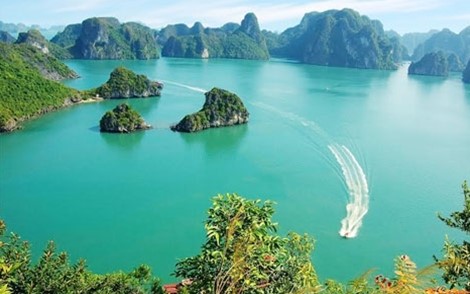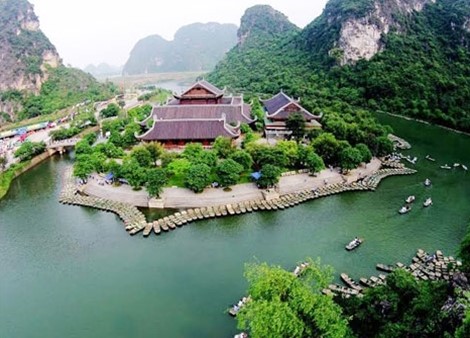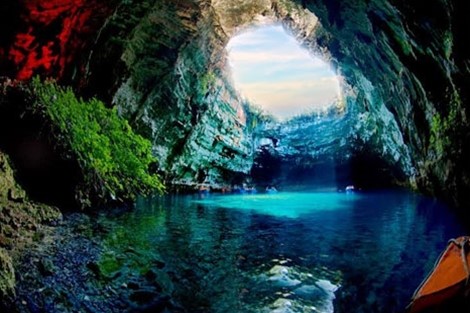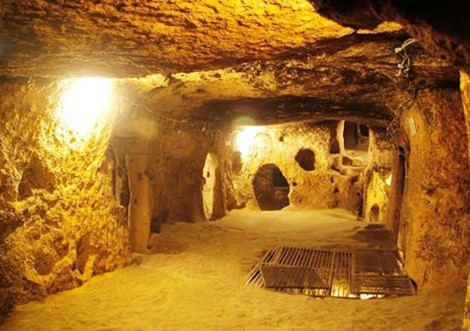
The top destination - Ha Long Bay in Quang Ninh

Ha Long Bay, located in the Gulf of Tonkin, in the northeast of Vietnam, is 165 km from the capital of Ha Noi. Covering an area of 43,400 ha and including over 1,600 islands and islets, most of which are uninhabited and unaffected by humans, it forms a spectacular seascape of limestone pillars and is an ideal model of a mature Karst landscape developed during a warm and wet tropical climate. The property’s exceptional scenic beauty is complemented by its great biological interest.
The outstanding value of the property is centered around the drowned limestone karst landforms, displaying spectacular pillars with a variety of coastal erosional features such as arches and caves which form a majestic natural scenery. The repeated regression and transgression of the sea on the limestone karst over geological time has produced a mature landscape of clusters of conical peaks and isolated towers which were modified by sea invasion, adding an extra element to the process of lateral undercutting of the limestone towers and islands.
Halong Bay is also one of the cradles of ancient Vietnamese people, with three prehistoric cultures in succession, from 18,000 to 3,500 years ago, including Soi Nhu, Cai Beo and Ha Long culture.
With its unique value, Halong Bay has twice been recognized by UNESCO as a World Natural Heritage with outstanding value on aesthetics and geology and geomorphology. In 2011, Halong Bay was voted one of the 7 natural wonders of the world.
Ranking second: Trang An – Bai Dinh tourist complex in Ninh Binh

This scenic area covers hundreds of valleys, limestone caves, lakes and rivers with the terrain dating back 250 million years ago. A little canoe will take you through the picturesque landscape with restfulness, and this maze of limestone rocks will seclude you away from the pressure and noise of busy life.
Apart from natural values, within a day-trip to Ninh Binh, you will find the delightful aspects of the major religion in Asia, Buddhism, in the largest temple complex of the nation: Bai Dinh.
Recently completed in 2010s, the site reflects the great respect for the Vietnamese people to their Buddhas, and it is also a popular destination for million pilgrims annually during traditional New-Year celebration. Visiting the complex, you will have opportunities to see the biggest gold-plated copper Buddha statues, including the Goddess of Mercy – Quan Yin with a thousand of arms and eyes with layers of coronas behind her. The biggest bell tower bringing you a panoramic view of green mountains and river; the long corridors of 500 Arhat sculptures along two sides, and the other attractions.
In June 2014, UNESCO named to the World Heritage list theTrang An Scenic Landscape Complex (including Trang An ecotourism site, Tam Coc – Bich Dong, Bai Dinh pagoda – the largest of its kind in the country – and Hoa Lu, Vietnam’s former capital in the 10th and 11th centuries) in Ninh Binh Province.
Third place - Son Doong, the world’s largest cave in Quang Binh

Son Doong Cave in the Phong Nha - Ke Bang National Park of Bo Trach district, Quang Binh province, was discovered by a local man named Ho Khanh in 1991. In 2009, a group of British explorers led by Howard Limber conducted a survey and then announced that it was the world's largest cave.
Son Doong is more than 200m wide, 150m high, and about 9km long. It also houses a jungle and a river, and could fit a 40-storey skyscraper within its walls.
It was recently suggested by the American news website huffingtonpost.com as a place to visit. Son Doong was also listed in the "52 Places to Go in 2014" by New York Times travel.
Last May ABC broadcast live from the Son Doong cave on the program Good Morning America. The program attracted millions of viewers around the world.
The fourth place - Cu Chi tunnel in HCM City

Cu Chi is about 40 km northwest of HCM City center. The Cu Chi Tunnels are an elaborate underground community made up of 250 km of tunnels and chambers below the city.
The tunnels were dug with simple tools and bare hands during the French occupation in the 1940s, and further expanded during the Vietnam War in the 1960s to provide refuge and a defensive advantage over the American soldiers.
Despite all the bombings in their town, the Cu Chi people were able to continue their lives beneath the soil, where they slept, ate, planned attacks, healed their sick, and taught their young. Some even wed and gave birth underground, but over 10,000 lost their lives here.
The tunnels, dug deep underground, can withstand destructive bombs. Air is taken in through tunnel vents. The different areas of the system can be isolated when necessary.
The system comprises three floors, with the first 3m deep and able to resist artillery, tanks and armored vehicles. The second floor is 5m deep and able to resist small bombs. The ground floor is 8-10m deep.
The complex has been preserved as a war memorial and a tourist destination.
CNN in 2013 listed Cu Chi Tunnels as one of the world’s top underground tourist attractions.
Vietkings will present the files of these destinations to the World Alliance Records. The General Council of the World Alliance Records will meet in New Delhi (India) this September to approve the list of the top 100 attractive destinations in the world.
(Source:VNNet)





